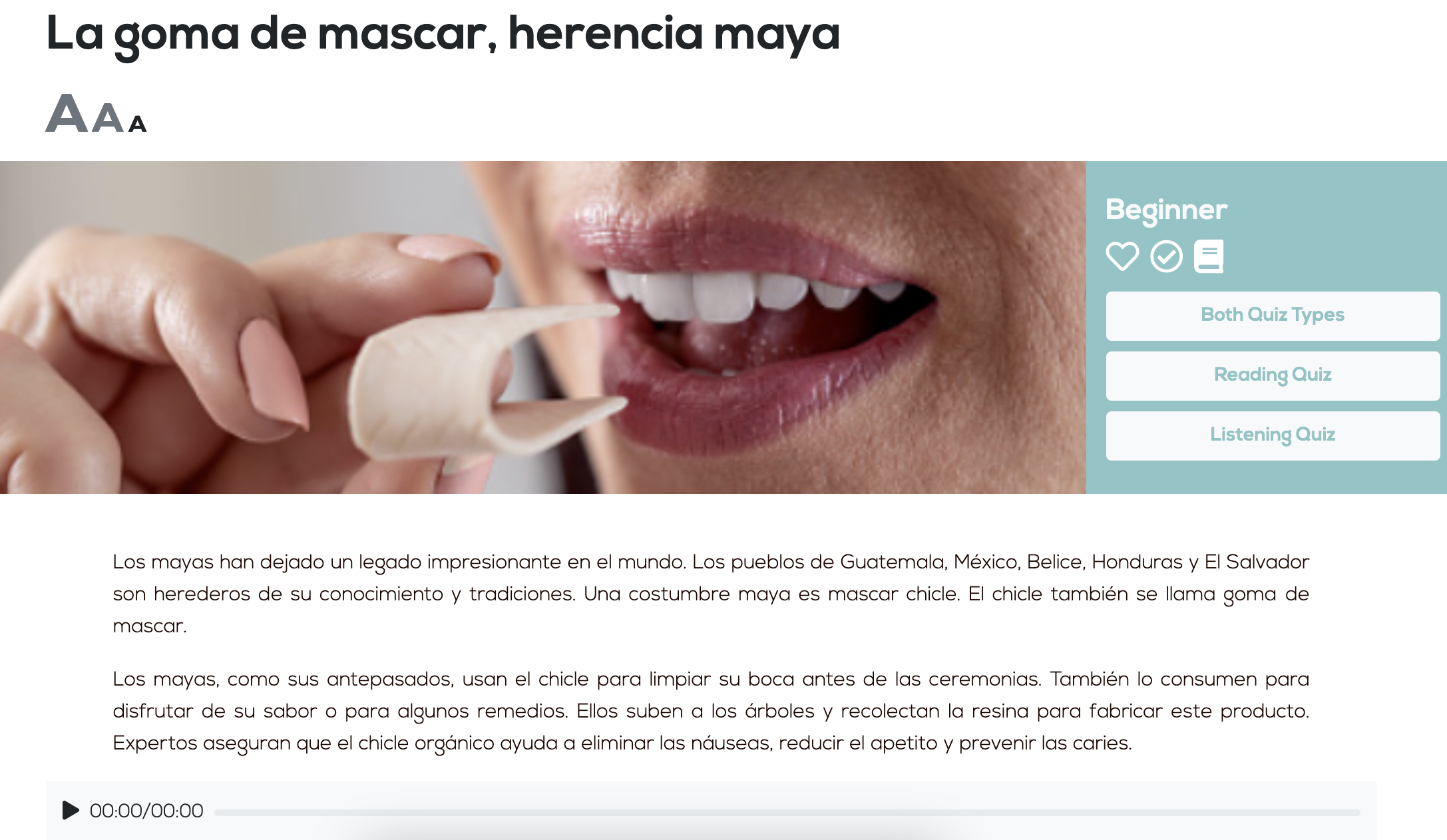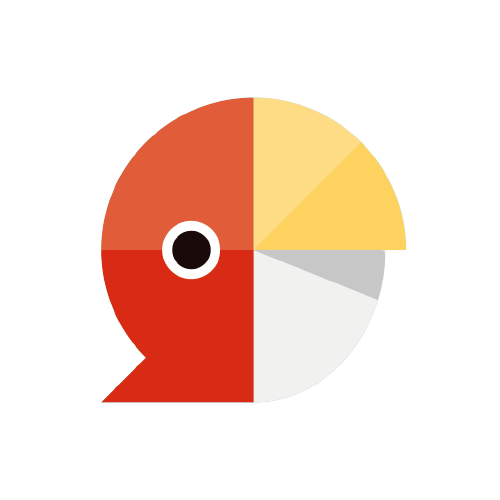Guide to Creating an Effective Conversational Spanish Lesson Plan for Beginners with Newsdle
Spanish conversational classes can be seen as extremely important by some students as they might have no other opportunities to practise speaking in Spanish.
Teaching speaking lessons is fun and rewarding but there is a significant danger of the lesson's focus shifting owing to anything happening in class.
Some of these challenges can be anticipated by creating a well-structured lesson plan which should be focused on:
- meeting the individual needs of your students.
- creating guided speaking opportunities through various activities and exercises.
- using authentic materials, such as Newsdle articles, as a way to engage your students in the language while also providing them with valuable cultural and social insights.
With these few guidelines in mind, let's take a look at how you can create an effective conversational Spanish lesson plan in no time using Newsdle lessons.
Ready to spark the convo?
P.S. Today's example is for a beginners’ class. However, the following guidelines can be applied to any level, so remember to adapt Steps 2 and 3 to your students’ needs and proficiency.
Step 1 - Defining Goals for Your Conversational Spanish Classes
👉 What will your students achieve in your class?
The first step of creating an effective conversational Spanish lesson plan is to define clear goals for your language classes. Setting goals not only helps you stay focused on the outcomes you want to achieve but also helps your students stay motivated and understand what they need to do to succeed.
When setting goals for your conversational Spanish classes, it's important to consider the wide range of possible objectives speaking lessons might offer, such as:
- improving students' speaking and listening or reading skills,
- increasing their vocabulary,
- developing their grammar knowledge, and
- improving their ability to communicate in real-life situations
In order to better or more easily define goals for your conversational Spanish classes, consider the following questions:
- What do you want your students to be able to do by the end of the lesson?
- What language skills and knowledge do they need to achieve these goals?
- What topics and themes do you want to cover in your lesson?
- What kind of activities and tasks will help your students to achieve their goals?
No matter the goal, all lessons should be planned and structured to be as more student-centric as possible by placing them in a relevant and appealing context. ALWAYS.
Your students' learning experience will be enhanced, and they'll be much more invested in your classes as a result.
Cultural elements are typically helpful in conversational lessons since they readily initiate discussions and students are typically more likely to ask questions as their understanding of Spanish culture grows.
So for our todays’ conversational Spanish lesson plan, our goal is to improve the students’ speaking skills to be able to discuss cultural differences in Spanish.
Step 2 - Choosing Appropriate Materials and Resources for Your Conversation Classes: Beginners
👉 What’s your context?
It's time to move on to Step 2 now that we are clear on our objective.
Choosing relevant materials and resources for your conversation courses that meet your aim is the second stage in developing a successful Spanish discussion lesson plan. The success of your lessons may be significantly influenced by the materials and tools you choose, since these choices have an impact on the engagement, motivation, and learning outcomes of your students.
While selecting materials and resources for your conversation classes, keep the following aspects in mind:
- Authenticity: Use resources that represent real-life circumstances and language use to assist your students build their communication skills in a genuine setting.
- Relevance: Select items that are relevant to your students' interests, needs, and ambitions. This will help you inspire them and make studying more pleasurable for them.
- Degree of difficulty: Select items that are appropriate for your students’ language level, since this must be challenging but not overwhelming.
- Employ a range of materials to introduce your students to various accents, dialects, and cultural viewpoints of Spanish-speaking nations.
Remember that we are preparing a lesson plan for beginners.
This is quite a challenge as beginners might be shy in conversation classes due to lack of confidence and vocabulary. So we should find relatable and engaging material, an article or post that explains a cultural matter and that could spark a debate or discussion on cultural differences.
I browsed the “Culture” section in Newsdle and found the perfect article in 2 minutes: Chewing Gum in Mayan Heritage

Why this article?
- Authentic: it reflects real-life language use
- Relevant: it matches our goals from step 1
- Level of difficulty: it is suitable for our group of students (beginners)
- Full support: Newsdle offers a keyword list and grammar point for every article so it’s easier to guide students in other tasks
- Diversity: this post exposes students to Hispanic culture.
- PLUS: Anybody can relate to this post, so this lesson material is perfect both for standard in-school classes and for online freelance tutors teaching international groups. 😉

So let’s update our goals and plan:
Lesson Plan - Conversational Spanish Class Chewing Gum in Mayan Heritage
-
Communicative aim:
By the end of the lesson, students will have improved their speaking skills and will be able to discuss cultural differences.
They will learn about the importance of chewing gum in Mayan culture, how it was made in Mayan civilization and will reflect on the similarities and differences between Mayan culture and their own culture.
-
Main aim:
-
Sub aim:
-
Speaking skill
-
Vocabulary and reading skill
Target language:
keywords from the vocabulary list on Newsdle + use of “Segun mi parecer, …” and use of “para + infinitive”.
Materials and aids to be used:
Newsdle article on "Chewing Gum in Mayan Heritage" + pictures
-
Step 3 - Structuring Your Conversation Spanish Lesson Plan for Beginners
👉 How can you effectively guide your students?
Step 3 of creating an effective conversational Spanish lesson plan is structuring your conversation Spanish lesson plan. A well-structured lesson plan will help you to create a clear roadmap for your classes and ensure that your students are meeting their learning objectives.
When structuring your conversation Spanish lesson plan, consider the following elements:
- Warm-up activity: Begin your class with a warm-up activity that gets your students engaged and excited about the upcoming lesson. This could be a game, a discussion question, or a quick review of previous material.
- Vocabulary and/or useful grammar: Introduce and review key vocabulary and grammar structures that are relevant to the topic of the lesson. Use interactive activities like games or pair work to reinforce the language points.
- Topic-based conversation practice: Use the chosen material to provide a framework for a discussion or conversation practice. Encourage your students to use the vocabulary and grammar structures they have learned in a natural and engaging way.
- Feedback: Provide feedback on your students' language use and encourage them to reflect on their progress.
- Homework assignment and review: Assign homework that encourages your students to practise their Spanish outside of the classroom. Use review activities like quizzes or games to reinforce the key concepts and language points of the lesson.
|
Time |
Stage aim |
Student activity (including interaction pattern eg. Individual, pairs, small groups, whole class) |
|
5 mins |
Warm-up / Introduction |
|
|
10 mins |
Vocabulary |
Students will read aloud the keywords from Newsdle (if beginners, teacher should model the pronunciation) and match them with pictures shown by the teacher. |
|
10 mins |
Reading |
|
|
20 mins |
Class Discussion (Speaking) |
After they have finished reading, discuss the following questions:
Divide students into small groups and have them share their reflections with each other. As a class, have each group share one similarity and one difference they noticed between Mayan culture and their own culture. |
|
10 mins |
Conclusion |
|
|
5mins |
Homework |
Explain: Reading and listening quiz on Newsdle |
Step 4 - Planning Class, the Key to Success: Anticipating Problems and Time Management
👉What are the challenges you can anticipate?
Writing a lesson plan helps teachers write down the aim of the lesson and to structure the way to achieve it. However, a lesson plan is also essential to foresee and address the several potential issues that can come up in a Spanish conversational class in order to create a positive learning environment and ensure that your students meet their learning objectives.
- Time management: Running out of time in language lessons is one of the most frequent problems. Plan your class carefully and allot designated time intervals for each activity to avoid this. Don't spend too much time on any one activity, and make sure you keep to the timetable.
- Cultural clashes: Discussions may occasionally bring up delicate subjects or cultural disparities. All students should work in a safe and respectful atmosphere. Promote open and polite discussion, and make sure to step in if things get too hot or rude. Where appropriate, provide context and cultural background information.
- Language proficiency: IIt's possible that some students might possess more advanced speaking skills than others. To prevent this from becoming an issue, include activities that cater to different levels of proficiency, such as pair work or group discussions that allow for more advanced students to challenge themselves while providing support and guidance to less advanced students.
- Technical difficulties: As online language programmes become more popular, technological concerns such as inadequate internet access or faulty equipment might provide a barrier. To avoid this, test your equipment and internet connection before the lesson. Have a backup plan in case of technological difficulties, such as the use of a phone or another platform.
- Feedback is essential for assisting students in improving their language abilities. Some students, however, may be sensitive to criticism or have difficulty understanding comments in a foreign language. To solve this, give constructive comments that focus on areas for growth while also recognising their strengths. Encourage and motivate your kids by using positive reinforcement.
So let’s update our conversational Spanish lesson plan:
Lesson Plan - Conversational Spanish Class Chewing Gum in Mayan Heritage
-
Communicative aim:
By the end of the lesson, students will have improved their speaking skills and will be able to discuss cultural differences.
They will learn about the importance of chewing gum in Mayan culture, how it was made in Mayan civilization and will reflect on the similarities and differences between Mayan culture and their own culture.
-
Main aim:
-
Sub aim:
-
Speaking skill
-
Vocabulary and reading skill
Target language:
keywords from the vocabulary list on Newsdle + use of “Segun mi parecer, …” and use of “para + infinitive”.
Materials and aids to be used:
Newsdle article on "Chewing Gum in Mayan Heritage" + pictures
Anticipated difficulties and possible solutions:
-
Time management: plan the schedule carefully and stick to it
-
Language proficiency: go through the vocabulary with the class and encourage pair/group discussions
-
Technical issues: have students to download the app
-
And let’s add the schedule for a 1-hour long conversational Spanish lesson:
|
Time |
Stage aim |
Student activity (including interaction pattern eg. Individual, pairs, small groups, whole class) |
|
5 mins |
Warm-up / Introduction |
|
|
10 mins |
Vocabulary |
Students will read aloud the keywords from Newsdle (if beginners, teacher should model the pronunciation) and match them with pictures shown by the teacher. |
|
10 mins |
Reading |
|
|
20 mins |
Class Discussion (Speaking) |
After they have finished reading, discuss the following questions:
Divide students into small groups and have them share their reflections with each other. As a class, have each group share one similarity and one difference they noticed between Mayan culture and their own culture. |
|
10 mins |
Conclusion |
|
|
5mins |
Homework |
Explain: Reading and listening quiz on Newsdle |
And our conversational Spanish lesson plan is ready!
Well done to us!
The Benefit of Using Newsdle Spanish Reading or Listening Materials in a Conversational Class
Reading or listening materials should be a starting point for practice in conversation classes. The following are some ideas for utilising reading/listening materials in a conversational class:
- Elicit vocabulary: Pre-teach any language that your students might not be familiar with before introducing the subject. This will increase understanding and make the content more approachable.
- Comprehension check: Use comprehension questions to assess students' grasp of the subject after they have read or heard it, and to encourage conversation. Invite students to discuss their views and opinions on the subject.
- Discuss cultural differences: take use of the chance to talk about the parallels and contrasts across cultures. This might encourage cross-cultural dialogue and comprehension.
- Focus on language structures: Although communication is the main objective of a conversation class, it's still crucial to review and rehearse the key grammatical structures*.[Text Wrapping Break]Encourage students to apply the structures in conversation by using the content as a setting to introduce or refresh grammatical ideas.
* Important note on grammar
It is appropriate to incorporate grammar work into your conversational lesson if and whenever your students need to strengthen their grammar knowledge in order to communicate successfully. However, it's crucial to make sure that the grammar point does not end up being the focus of your lesson.
Further readings:
Why Your Students Will Benefit from Newsdle-Based Conversational Spanish Lesson Plans
For both students and teachers, using Spanish lesson plans that are conversation-based can offer several advantages. These are a few of the main advantages:
- Language abilities: Newsdle authentic but graded material is a great resource to conversation-based teachings that emphasise communication, students have numerous opportunities to develop their speaking and listening abilities. Their self-assurance and linguistic proficiency are boosted as a result.
- Cultural awareness: Newsdle lessons frequently cover topics like traditions, customs, and current events that are related to Spanish and Latin American culture. Students benefit from having a greater knowledge of the cultural setting in which the language they are learning is used.
- Confidence: Students can develop their confidence in utilising the language in everyday settings by participating in conversation-based classes. Students can gain the confidence to use Spanish in a range of circumstances by developing communication skills in a supportive atmosphere.
- Active listening, critical thinking, and problem-solving are just a few of the personal skills that conversational classes may aid students in developing, in addition to language learning.
- Flexibility: Conversation-based courses may be modified to accommodate various learning preferences and competence levels, and this is quite easy to do with Newsdle. These may be customised to the particular requirements and interests of the students, which improves the learning process' effectiveness.
- One tap away: your students will never lose your teaching material as they can access it via app or website.
And What’s Your Lesson Plan?
Creating an effective conversational Spanish lesson plan with Newsdle is a great way to make sure you have all the necessary materials for a successful class, and you can forget the stress of looking for high quality content for hours!
You’ll then have more time to focus on engaging activities, providing structure and direction for your students. By using a variety of resources such as news articles, you can ensure that your lessons provide an enriching learning experience that helps your students better understand the language and its linguistic and cultural nuances.
Try this ready-made plan in your beginners’ class or browse any other graded content and adapt these guidelines to your students’ needs and level… Don’t forget to let us know how it goes!
Have fun creating conversations in Spanish!
Author:

Fabia Parodi
Fascinated by foreign languages and cultures, Fabia Parodi was determined to be a polyglot since she was a child. Fluent in Italian, English, French and Spanish and competent in Mandarin Chinese, Fabia is an experienced language teacher, translator and multicultural marketing specialist.
When in class, she always make sure to include graded and authentic materials in her lessons to expose students to foreign cultures and to introduce a more natural use of the language they are learning. The two things she loves more than languages are travelling and exchanging stories with people from all over the world.


